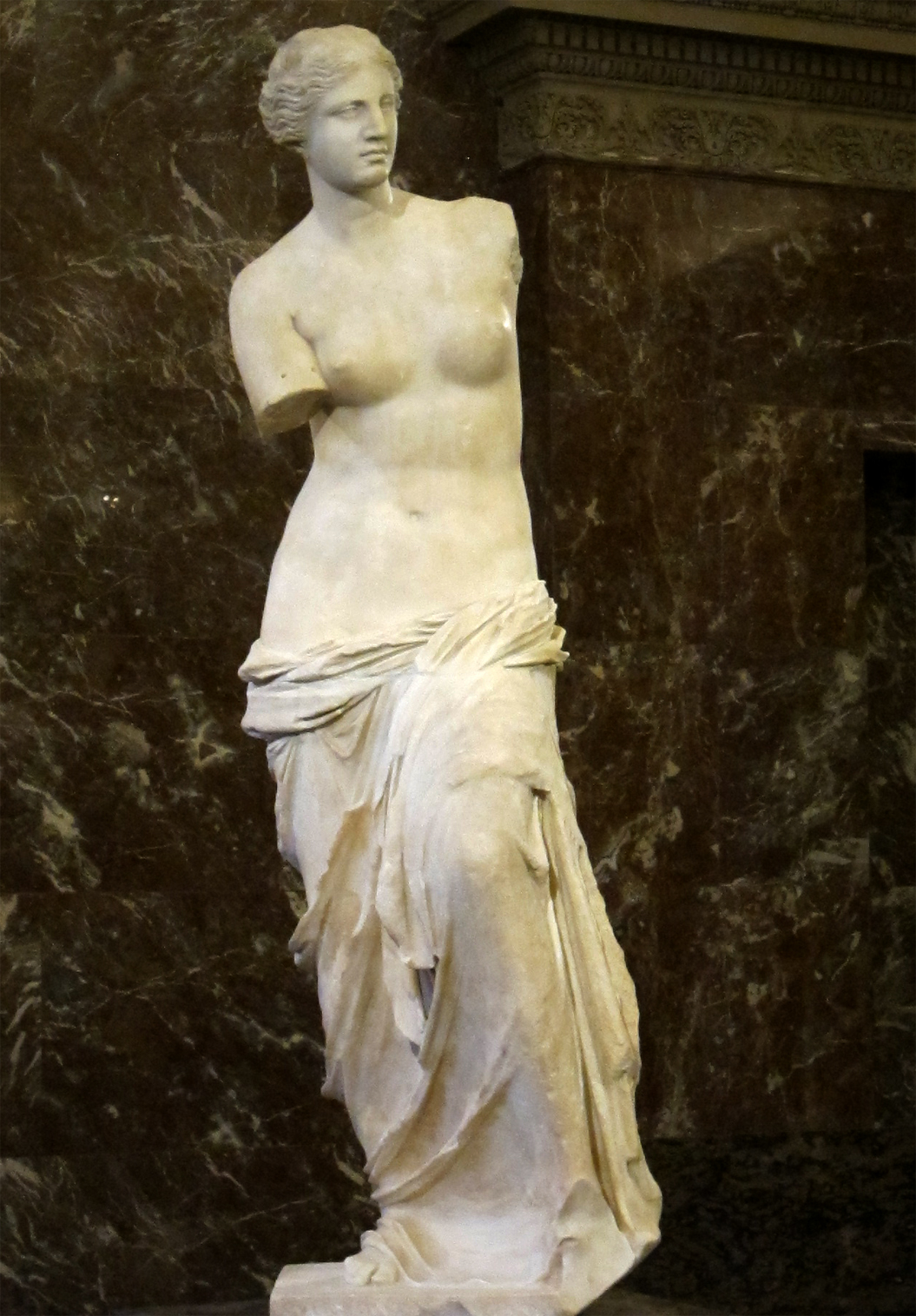 |
 |
Why study art history? One frequent justification is to say it introduces students to a body of knowledge that is understood to be useful for an educated person. This is certainly true, but I think a more fundamental reason is that in studying art history the student is introduced to one of the fundamental means of human communication. In exploring the history of art one becomes aware of the wide variety of ways humans have conceived of themselves and their relationship to the surrounding world. In studying other cultures we, thus, come to understand how we are like and different from other people. Through the study of art history, we learn about ourselves and gain an understanding and respect for people with different perspectives.
As a way of getting at this issue I would like to compare two monuments of art history from radically different social and cultural contexts:
 |
 |
The work on the left is traditionally called the Venus of Willendorf. When this work was discovered near the Austrian town of Willendorf, the scholars named it after Venus, the Roman goddess of love, who was traditionally represented as nude in Western art since Antiquity. The statue is made of limestone and is only about 4 1/4" inches high. Significantly, it easily can be held in the palm of your hand. It comes from the Paleolithic period, or the old stone age. Scholars date the work from between 30,000 and 20,000 B.C.E.
We know the work on the right side popularly as the Venus de Milo. More accurately since this is a Greek work, it should be identified as Aphrodite, the Greek goddess of love. It was made for a sanctuary dedicated to Aphrodite on the Aegean island of Melos. The statue is made of Parian marble (quarried on the island of Paros) and is approximately lifesize. It comes from the Hellenistic period of Greek art, and can be dated about 150 B.C.E.
Which of these works do you consider to be more "realistic"? Which is more "naturalistic"? Which is more "beautiful"? Which is more "successful" as a work of art? When you answer these questions consider what you mean by words like "realistic", "beautiful", and "naturalistic". Also consider what are your criteria for determining "success" in a work of art.
Clearly the Venus de Milo is more familiar to us. To demonstrate this point, consider the number of beauty products that have based ad campaigns around this work. Imagine basing ad campaigns around the Venus of Willendorf. Why do we use the Venus de Milo in our ad campaigns? One of the effects of studying art history is that it makes us reconsider what is familiar. In effect we learn to make the familiar unfamiliar, while at the same time, we gain a familiarity with what we might at first consider to be unfamiliar.
Works of art are the products of particular social, cultural, and religious contexts. Through study of works of art we gain glimpses of these different contexts. For the Venus de Milo we have a wide body of written records to use to help reconstruct its contexts, but in the case of the Venus of Willendorf, artifacts like this present scholars one of the few bodies of evidence for reconstructing its contexts.
I would like you to imagine yourself as an archaeologist who has uncovered the two works. On the basis of the physical evidence recounted above and on the basis of your consideration of the nature of the representation of the two works, I would like you to construct a picture of the social, economic, religious, artistic, etc contexts of the two works. In responding to this imagine the process of making the respective works. I would also like you to consider gender issues. What conclusions would you draw about the position of women in the respective societies? What do these works say about the conception of sexuality?